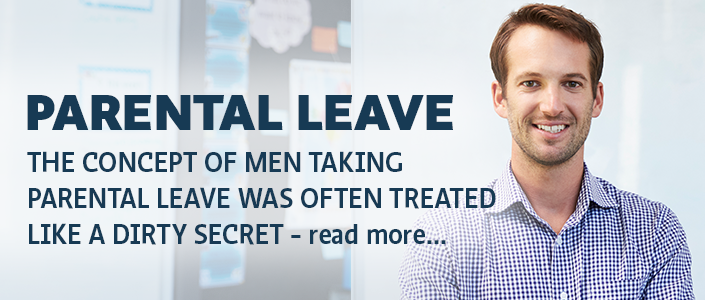Parenting Leave for fathers – the conversation Australia needs to have

Just one in 20 Australian fathers take primary parental leave according to Australian Bureau of Statistics in 2017. The key drivers of stay-at-work fathers may be the result of gender pay gap difference where women earn less making it unaffordable for a family; or, where fathers are considered as ‘secondary carers’ by employers, not ‘primary carers’, so they are unable to take leave because it is not available to them.
The gender pay gap is based around men earning more than women, often for similar status/role/job levels. As such, a father being the primary carer whilst the mother returns to a lesser paid position may be economically unviable for the family.
Fathers being labelled ‘secondary carers’ stem from Australia not having ‘a nationally legislated ‘shared parental leave’ approach’ (AIFS, 2018 Conference, Emma Walsh). Walsh argues that men do want to be involved in the lives of their children and according to a Human Rights Commission survey in 2014, 75% of men would like additional parenting leave.
Despite the provision of employer-funded paid parental leave reaching a six-year high in 2019, more than half of employers still do not offer paid parental leave. Resistance to providing parental leave to fathers stem from many businesses considering the leave too costly to implement and a big financial impact.
Yet, a recent article by ABC News cites “Organisations which provide strong parental leave schemes are likely to have better recruitment and higher retention and promotion rates”. An American study cited by Walsh showed that 87% of business respondents said paid parental leave did not result in any cost increases for their business.
In Australia, employees can be paid by both their employer and by the Australian government. The government scheme includes up to 18 weeks at the minimum wage rate and the ‘Dad and Partner Pay’ of 2 weeks.
Paid primary carer’s leave is most commonly offered in Education and Training and Financial and Insurance Services.
One major barrier for men taking paid parenting leave is the stigma attached to men being primary carers. Blake Woodward, the Suit Tie Stroller blogger, reports his decision to blog about being a primary carer has made him a hate figure on the internet.
He has been called an embarrassment to his firm and himself, and even his own workmates reported the experience of being told by HR to not tell anyone why they were taking the leave to be a primary carer. This denies the father the joy of being able to celebrate what they are doing with those they work with.
If gender parity and wage parity is an objective, then the role of fathers as primary carers and the role of mothers as primary income earners must become the norm, not the exception.
Sources & Further Reading
https://aifs.gov.au/aifs-conference/fathers-and-parental-leave – Emma Walsh, 2018.
https://www.abs.gov.au/ausstats/abs@.nsf/Lookup/by%20Subject/4125.0~Nov%202019~Media%20Release~Mixed%20outcomes%20for%20men%20and%20women%20towards%20equity%20%20(Media%20Release)~10
https://www.abc.net.au/news/2020-02-04/stay-at-home-parent-dads-learn-about-beer-and-bubs/11909706, Blake Woodward, the Suit Tie Stroller blogger.
https://dynamicbusiness.com.au/topics/workplace/leading-the-change-fender-katsalidis-introduces-equal-parental-leave.html
https://www.abc.net.au/news/2019-12-13/why-male-teachers-are-disappearing-from-australian-schools/11780026
https://www.sciencedirect.com/science/article/abs/pii/S0272775717303278?via%3Dihub, Kevin McGrath, 2017

